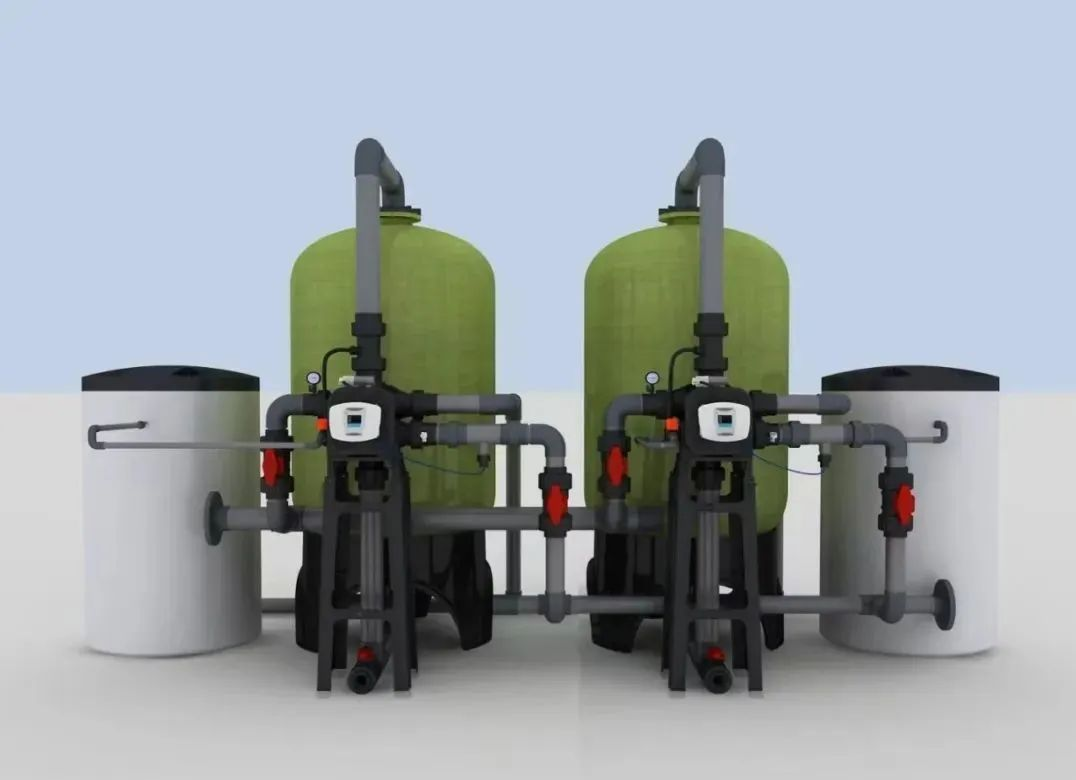
Softening salt, also known as ion exchange resin regeneration agent. Its main chemical component is sodium chloride (NaCl), with a content of more than 99.5%, and is generally in the shape of a spherical agent.
Working principle
There are many ways to treat water, and the water treatment technology used by the water softener is ion exchange technology. All ion exchange resins in advanced water purifiers are usually sodium ion exchange resins.
The functional ions on the resin are exchanged with the calcium and magnesium ions in the water, and the harmful impurity ions in the water (mainly calcium ions Ca, magnesium ions Mg) are adsorbed in the resin to achieve the purpose of purifying the water quality.
To remove the impurities adsorbed by the resin, sodium ions (Na) are needed. Through the backwashing method, the impurity ions adsorbed by the resin are replaced by ion exchange, thereby restoring the adsorption capacity of the ion exchange resin. This process is also called ion exchange resin regeneration.
Importance of softening salt
Characteristics of softening salt
1. The purity of the sodium chloride content of softening salt is as high as 99.1%, which is completely food grade.
2. The shape of soft water salt remains consistent, without adhesives, no bridging, no lumps, no collapse, no clogging of equipment, ensuring the quality and efficiency of soft water;
3. The ability of soft water salt to remove iron ions is 6 times that of general industrial salt, and it can protect equipment with high efficiency;
4. It can double the removal of impurities in water, which can improve the efficiency of the water softener, reduce maintenance, and extend the life.
Benefits of soft water
1. The water quality is smooth and has a higher oxygen content; (mostly used in aquaculture)
2. Avoid water stains and dirt on sanitary ware, and scaling of hot and cold water pipes; (water for hospitals, boilers, and heating)
3. The skin is smoother and the hair is softer after bathing; (soft water must be matched in beauty salons)
4. After washing, the clothes are more fluffy and soft, and the color is more gorgeous; reduce the amount of chemical detergents; (mostly used in families and high-end hotels; soft water is a must for laundry shops)
5. The sodium chloride content of salt is as high as 99.1% or more; it is safer to drink household soft water.
Softening salt plays a major role in the water softener. If there is no softening salt in the water softener, the ion exchange resin will gradually fail, and the corresponding water softener will lose the function of softening and purifying water. However, it is not recommended to drink water directly from the water softener, because softening salt can only remove calcium and magnesium ions and some suspended matter in clean water, and cannot sterilize.
Introduction to the use of softening salt
It can be calculated as follows: resin volume (L) * 160 = salt volume (g), soft water salt NaCl regeneration liquid concentration 5%-12%; such as resin volume 10L, generally each regeneration is 10*160=1600g or 1.6 kg, which needs to be based on the requirements of inlet water hardness and outlet water quality.
A simple calculation method for resin regeneration salt consumption is as follows:
NaCl regeneration liquid concentration 5%-12%;
The concentration of the salt solution is determined by the ratio of the water flow injected into the ejector to the saturated salt solution volume sucked in. The general salt solution concentration is between 5%-12%. The higher the inlet water pressure, the higher the concentration after mixing. Setting parameters Under normal circumstances: 10 minutes of back suction, 30-50 minutes of regeneration, and 10-20 minutes of water injection (salt barrel with float control). You can make small changes based on the above parameters.
The amount of regeneration liquid is 2-3 times the volume of resin filling;
That is, salt is required for each liter of resin:
Minimum salt consumption: 2 times x concentration 5% = 100g
Maximum salt consumption: 3 times x concentration 8% = 240g
Take the middle value: 2 times x concentration 8% = 160g
Countercurrent regeneration of 1L resin consumes about 80-160g of salt, and downstream regeneration of 1L resin consumes about 160-240g of salt. The current automatic control valve has fewer faults in downstream regeneration and consumes a little more salt. When adding salt to the salt tank, pay attention to using large-grain salt, because there are gaps between large-grain salt particles for salt dissolution, while fine salt is slow to dissolve, and always ensure that the salt particles are above the brine level, that is, salt is seen but water is not seen, to ensure that it is a saturated salt solution.
Extrepure Resin(Shanghai) CO.,LTD
